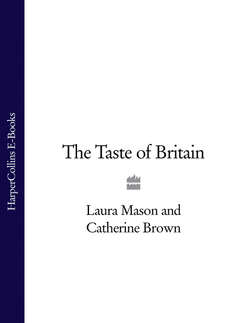Читать книгу The Taste of Britain - Hugh Fearnley-Whittingstall - Страница 186
HISTORY:
ОглавлениеSparkling cider was made in Herefordshire in the 1600s. It had been made possible by the development of glass bottles strong enough to withstand the secondary fermentation. Their invention is credited to Sir Kenelm Digby, a man with a deep interest in the arts of brewing and fermenting, whose collection of recipes for food and especially meads, metheglins and other drinks was posthumously published as The Closet of … Sir Kenelme Digbie, Kt., Opened (1669). This is a charming myth, for he was a charming man, but the more likely explanation is that Lord Scudamore, whose family was foremost in improving varieties of apples suitable for cider, began to bottle and lay down cider in the reign of Charles I (Davies, 1993). Glass strong enough to hold the explosive liquid was developed as a result of hotter-burning coal furnaces being used by the glassworkers when the use of charcoal was curtailed after 1615. By the end of the century, there was such a trade with London in bottled cider (sent down the Thames from Lechlade) that 5 or 6 glasshouses had been built in the area to supply the bottles.
The tradition suffered in the eighteenth century when cider became the drink of the poor but was revived towards the end of the reign of Queen Victoria. In 1895, Law’s Grocer’s Manual stated that, ‘Champagne cider is, or should be, the best mellow or sweet cider bottled before it has fermented or worked much … it is quite frequently made by charging common cider that is deficient in spirit and sparkle with carbonic acid gas.’ Over the last century, both secondary fermentation and carbon dioxide have been used by various manufacturers to give sparkling ciders. Since the late 1970s, an increasing interest in the art of making fine cider has led several specialists to experiment once more with sparkling ciders made by secondary fermentation. At least 7 makers produce a naturally sparkling cider.
